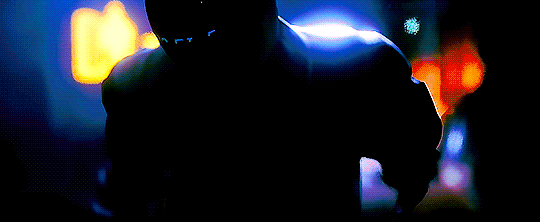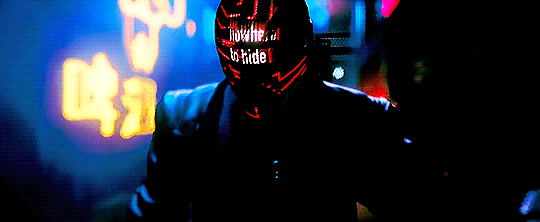#gesichtsphilosophie
Explore tagged Tumblr posts
Text

Goldie Williams - Rebellious Woman Who Got Arrested For Vagrancy & Refused to Unfold Her Arms and Stop Making This Face For Her 1898 Mugshot. (Omaha, Nebraska) (via)
925 notes
·
View notes
Text
face machine

RE:BORN 2022
3K notes
·
View notes
Text
Gesichtsphilosophie (2017)
Excerpt:
Das Ganze des Gesichts kann als ein teilweise gespieltes, teilweise unbewusstes Bild in all seiner Komplexität verstanden werden. Ohne zu vergessen, dass das Ganze des Gesichts mehr ist als ein Bild, aber in der Anschauung zu einem Bild reduziert wird. Dieses wird dann erforscht, als Betasten eines Leinwandgesichts zur Geste gemacht in den Filmen Illibatezza, Persona und The Truman Show, und dem Lindsay Lohan Video von Richard Philips (Abb. 2). Abgetastet, eingelesen werden erfassbare Mienen im Bild: Lächeln, und das Herunterziehen der Mundwinkel für das es keinen entsprechenden Begriff gibt (es wird vom Stirnrunzeln gesprochen, aber niemand käme auf die Idee ein Stirnrunzel Emoticon zu entwerfen), Blicke zuwerfen durch justieren des Verhältnisses von Pupille und Augenlid. Eine weiche Grenze verläuft zwischen dem Ablesen dieser Zeichen und dem Hinnehmen der Oberfläche des Gesichts als Kunstwerk.
Published in Pareidolia Nr. 27
Order
1 note
·
View note
Text


anti facial recognition mask by Jip van Leeuwenstein
6 notes
·
View notes
Text
In den selteneren Fällen, in denen sich Gegenwartsdichter auf Porträtgemälde beziehen, wählen sie meist eines aus den früheren Jahrhunderten der Porträtmalerei, in denen die Kategorien Ähnlichkeit, Identität und Referenzialität noch nicht in Auflösung begriffen sind, um sich darauf mit dem Gestus eines nostalgischen Restitutionsbegehrens zu beziehen. Viel häufiger findet man jetzt aber dekomponierte Gesichter, deren Ästhetik die neuesten Medien des digitalen Zeitalters simuliert. Seltenheitswert hat heute ein Porträtgedicht wie Durs Grünbeins „Selbstporträt vor violettem Hintergrund“ (2012), das im Rahmen einer melancholischen Selbstinventur die eigene Auflösung zwar wortwörtlich thematisiert, aber noch dagegen anschreibt: denn längst ist die dekompositorische Ästhetik – mit und ohne kulturkritische Implikation – Standard geworden.
Evi Zemanek: Faziale De-Kompositionen in Dichtung und Malerei der Avantgarden. In: Gesichtsauflösungen / Mona Körte ; Judith Elisabeth Weiss (Hg.), Berlin : Zentrum für Literatur- und Kulturforschung (ZfL), 2013, Interjekte ; 4.2013 ; S. 55-66, S. 66
2 notes
·
View notes
Text

Use of the “Biometrics Automated Toolset” system in Fallujah 2007
5 notes
·
View notes
Text

In 2011 I wrote a text about Facebook as a feed of faces, inspired by The Society of the Spectacle (Debord) and A Thousand Plateaus (Deleuze/Guattari):
"Faces, that are amongst our most subliminal ways of communicating, become our fastest and most plain way of making a statement. Update profile picture, comment, like, like back, update again. The collectivization of communication failed, in fact this means the failure of mass art.
Today's market of representations means that we exchange images that are valued by statements without consequence, statements whose only value is the one of attention, something we have learned from the advertising process, which has become the key process of culture. This cultural praxis fails to find a history of human faces.
Faces tried to break the boundaries of word and image, they were processes of conscious creation of speaking images for the feelings that words fail to describe. The times of boredom that everyone wanders now, through images that don‘t form related stories, are a result of loosing our dream of creating non-static post-representative playful expressions." link

Some years later came the "Facemachine" project as an answer to this. Facemachine was the idea of a synthetic feed of faces. On Facebook I collected a feed of net art/glitch art faces. With friends we then built a playful interface, and installed it in an arcade machine.
Today such a machine of synthetic faces is possible without a feed, by generating the images with trashy AI algorithms, trained on historic faces and art styles.
3 notes
·
View notes
Photo
Ruiner


8K notes
·
View notes
Text
instagram
Instagrammer formanpottery embedds little hidden face in product photography to beat the algorithm

0 notes
Text

OpenAI's CTO when asked if SORA was trained on Youtube Videos

0 notes
Text

"… A FACE. GRIMACING HORRIBLY. LOOKING LIKE IT’S STRAINED WITH EXCESSIVE suffering. Pain twists the muscles, deforms the expression. The mouth is writhing, the eyes look mad. Is it some torture victim dying at the hands of a sadistic executioner? Is it a martyr? Some unfortunate suffering the torments of an attack of madness? Is it …?
The monstrous photograph that inspired these questions was found in a prominent place on page one of one of the most popular sporting reviews, La Vie au Grand Air (December 19, 1908). It showed a runner making the supreme effort to reach the finish line.
Photos like this one are not at all rare. Who among you hasn’t more than once seen in a newspaper the dizzying swerving of autos competing for a trophy? Or a dangerous motorcycle race? Or simply some imbecile.... fainting after having run forty kilometers? Or a boxing match? [....]
The more we observe it the clearer it is that the love for violent sports seems to be a veritable contemporary malady. The entire younger generation of today is attacked by it, as well as a large part of the others....
For it has all the characteristics of a mental illness. It’s an obsession that succeeds in abolishing all reasoning power in its victim. The runner can’t control himself. He has lost the little free will that the normal man enjoys. Just as the hysteric doesn’t know how to vanquish his pathological desires; just as the alcoholic no longer has the strength to refuse a drink that he knows is fatal; just as the opium smoker or the morphine addict must absorb his poison, the runner doesn’t have the force of will to refuse himself a pleasure that everything shows him to be absurd, dangerous, and painful."
- Victor Serge, writing in Le Révolté, January 9, 1909
0 notes
Text

Allgemeine photographische Zeitung, 1939, Heft 8 S. 6
"Das Verantwortungsbewusstsein des Photographen"
https://anno.onb.ac.at/cgi-content/anno-plus?aid=phz&datum=1939&page=132&size=45&qid=IVBUOHZUR4T7GQ2XXOEIPPJVS8E0N7
0 notes
Text
And yes, I was lucky to enter a very long residency of six years at the Google Arts & Culture Lab, which I just stopped in December. And I was able to focus entirely on that, so that was really really really nice. And of course some crazy, unexpected things happened. For instance showing my hacky openFrameworks visualization of artworks to Steven Spielberg and James Cameron at TED. It was a bit random but it happened. So that was really an unexpected journey through the corporate world of big FAANG companies. I was able at the Google Arts & Culture Lab to really apply machine learning to interaction design. This is a project called Portrait Matcher which is very similar to Sharing Faces from Kyle McDonald but here applied to artworks. And it was fun, it was nice. But it felt a little bit gimmicky, a little bit— The connection with the artworks was a bit shallow and I wanted to see if there was a way to create a deeper connection with artworks and using the face. And so that was in 2015. The FaceNet paper was out but there was no public implementation of it. But being at Google, I was able to use their internal implementation because it’s Googlers who made this paper. And so it was crazy, I was able to just put all the artworks of Google Arts & Culture through the model, get the embeddings, and then do nearest-neighbor search from any image.
From a talk by Cyril Diagne recounting his jobs from artist, to design professor, to a Google residency and being the main developer behind that famous Google Arts & Culture TED talk, then creating his own AI company and selling it to Stability.ai
Cyril Diagne in STUDIO for Creative Inquiry » Art && Code: Homemade on 01/16/2021
http://opentranscripts.org/transcript/art-code-homemade-cyril-diagne/
0 notes
Text

Kashmir Hill, Your Face Belongs to Us. 2023
1 note
·
View note
Text

"Person Identification Systems" at German-Polish border in Görlitz
1 note
·
View note
